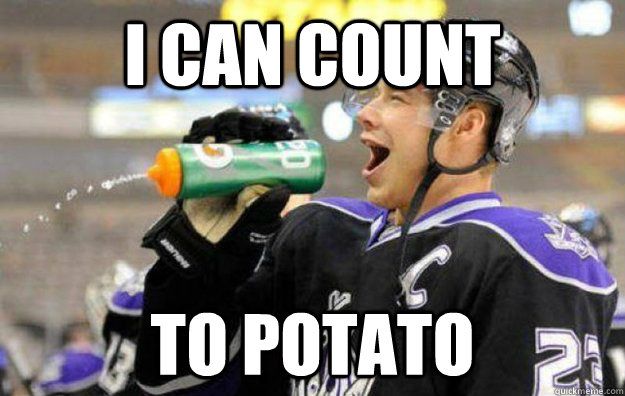
Still my go-to image for any stats posts.
If you’ve been following me on Twitter for a while, then you know I’ve been spending a good amount of time lately trying to tie the possession stats to systems. I think it’s the next step in the evolution of the hockey stats, since systems play a huge role in the game. It starts with personnel decisions, can a player play within the coach’s system? If not, see if you can leverage that to get a player who can.
After personnel decisions, it gets to executing the system. Defensive coverages, forechecking, gap control, assignments, etc. A lot of this is factored into the overall hockey IQ of a player, but certain unteachable skills should be factored in. Using Dylan McIlrath as an example, he’s not the best skater, so you would think he’s not a great fit for Alain Vigneault’s man-coverage in the defensive zone. But he uses smart gap control to compensate for his skating.
The theory of how stats tie to these systems is fairly simple. Starting with the defensive zone (I honestly haven’t spent much time on forechecks yet), which is the easiest to theorize systems effect, there are three basic types of systems played:
- Man coverage – stick your man, constantly pressure, force turnovers
- Strong side overload – outnumber the opposition on the strong side boards, limit options, force turnovers
- Zone coverage – players defend the slot and keep shots to the outside
The theory that I’ve been working with is that teams playing a strict low zone collapse will have pretty bad CA/60 numbers, but will have better SCA/60 (scoring chances against) and HSCA/60 (high danger scoring chances against) numbers. It makes sense, since this style is designed to limit prime opportunities.
The opposite end of the spectrum would be man coverage, where you might see limited CA/60 numbers since there is constant pressure. However man coverage is difficult and there is no room for errors like blown assignments, so SCA/60 and HSCA/60 should be at the highest. The overload would be the middle ground.
This would be very easy to apply, since we have detailed analysis on what each coach uses (we detail this in every game thread) and we have the possession numbers. Simply tie it all together and go from there, right?
Unfortunately it’s not that easy. Only a handful of coaches run just one of these systems. Ironically enough, the first two that come to mind are the last two Rangers coaches: Alain Vigneault (man coverage) and John Tortorella (low zone collapse). Most coaches use a hybrid of these systems, combining two or all three. The most common is an overload, but switching to a low zone collapse when the puck gets below the goal line.
The RTSS data we have available to us today doesn’t give us puck location in real time. It’s all event based. Unless there is a hit, shot attempt, or turnover behind the net, we won’t know when the puck gets there. So we simply don’t have the data available to analyze this. The only way I can think to do this is via manual tracking with people that can recognize when systems get switched on the fly. My initial thought process is manual tracking of when the switches occur, note the players on the ice, and then track the same way zone entries were tracked. But that is a lot of leg work. So I’m at an impasse. The data I want isn’t available and I simply don’t have the time to do the tracking.
Why write this, you ask? To get the theory out there. I think we need this next step of analysis to better understand how systems affect team numbers and if we can use this information to better analyze performance. We can also dive deeper into player analysis to see if it truly is a “coaching effect” on a player that struggles and needs a “change of scenery.” There are a ton of opportunities to use this data, and I’m hopeful it can eliminate some of the lazy narratives we see.
Share:
More About:Analysis
